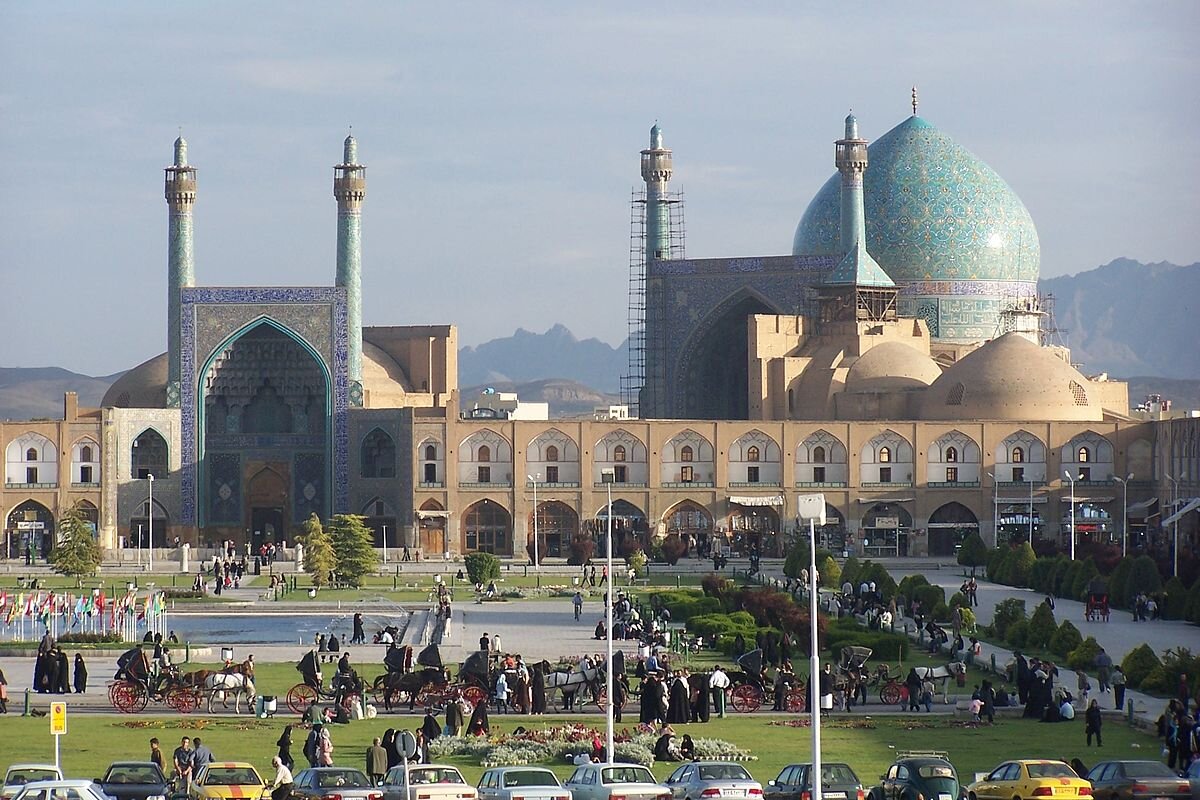17th-century Imam Mosque under potential threat due to moisture

TEHRAN – The overall structure of the 17th-century Imam Mosque is under potential threat due to moisture penetrating its foundation, a local tourism official said on Wednesday.
“The columns of Masjed-e Jameh Abbasi (aka Imam Mosque) are sinking due to [moisture caused by] the deterioration of the sewage system. If this issue is not addressed promptly, further damage will threaten this historical monument,” said Shahram Amiri, the spokesperson of Isfahan province’s tourism directorate.
Amiri made the remarks in an interview with IRNA, adding: “No matter how much we restore the dome of the mosque, if we do not address the deterioration, moisture, and humidity affecting its foundations, our efforts are essentially useless.”
He said the mentioned risk is separate from the existing issue of land subsidence, which threats the whole Isfahan.
It is worth noting that, in recent years, the historic city of Isfahan has faced significant subsidence issues due to devastating drought, excessive use of underground water, lack of perpetual water flow in the river of Zayandeh Rood, reduction of downpours, and other water resources.
“We have entered into negotiations with Isfahan’s water and sewage authority to investigate the mosque's sewage system,” Amiri said.
He explained that part of the moisture and humidity in the mosque is due to the outdated sewage system surrounding the huge monument. The mosque is located near residential neighborhoods and the Grand Bazaar of Isfahan, all of which have interconnected sewage systems.
He emphasized, "Our concerns about the sewage system surrounding Masjed-e Jameh Abbasi are even greater than those about Isfahan’s Masjed-e Atiq because a significant portion of the over one thousand shops in Imam Square are situated around this mosque."
According to Amiri, the moisture and humidity in the eastern prayer hall are due to the restrooms in the northeastern section.
In this regard, he added, "To resolve this issue, we intend to remove part of the northeastern restrooms from service. We have collaborated with the municipality to construct a new restroom in the northwest, outside the mosque's perimeter. This project was completed two weeks ago, allowing us to decommission the northeastern restrooms."
According to sources, Masjed-e Jameh Abbasi has long struggled with moisture and humidity, especially on its southern and eastern fronts. Experts cite several causes for this, including non-standard restorations, a deteriorated sewage system, and substandard restroom facilities.
Previously, in 2018, efforts were made to control the moisture and humidity by renovating and upgrading the northeastern restrooms. Additionally, a new set of restrooms was built outside the mosque, for use by the public and tourists.
Earlier in June, the scaffolding surrounding the magnificent dome of the Imam Mosque was finally removed after 14 years of meticulous restoration work.
The Imam Mosque dome, adorned with over 500,000 tiles, is recognized as the largest tiled dome among historic mosques worldwide, the official added.
Cultural heritage enthusiasts say the removal of the scaffolding marks a significant milestone in preserving and showcasing the architectural splendor of the Imam Mosque, a jewel of Persian Islamic architecture.
A masterpiece of Islamic architecture, the Imam Mosque stands tall at the southern end of UNESCO-registered Naghsh-e Jahan Sq. (Imam Square) in Isfahan, central Iran. The majestic place of worship is impressive because of its sheer size and incredible decoration.
Originally named Masjed Shah (“the Shah Mosque”), its construction began in 1611 during the rule of the Safavid King Shah Abbas the Great, who reigned from 1588 to 1629. The mosque’s topmost dome was completed in the last year of his sovereignty.
Its interior and exterior walls are fully decorated with a polychrome, mostly dark blue, glazed tile revetment above a continuous marble dado.
Many believe each of the mosque’s parts is a work of genius that leaves a lasting impression. This place of devotion owes its splendor mostly to being covered with seven-color mosaic tiles and symmetrical calligraphic inscriptions.
Imam Square is hemmed on four sides by magnificent buildings: to the east, the Sheikh Lotfollah Mosque; to the west, the palace of Ali Qapu; to the north, the portico of Qeysarieh; and to the south, the eminent Imam Mosque.
“The square was at the heart of the Safavid capital’s culture, economy, religion, social power, government, and politics. Its vast sandy esplanade was used for celebrations, promenades, and public executions, for playing polo and for assembling troops,” according to the UNESCO website.
Isfahan has long been nicknamed as Nesf-e-Jahan, which translates into “half the world”, meaning seeing it is relevant to see the whole world. The city is home to many versatile artisans who underpin its reputation as a living museum of traditional culture.
AM
Leave a Comment